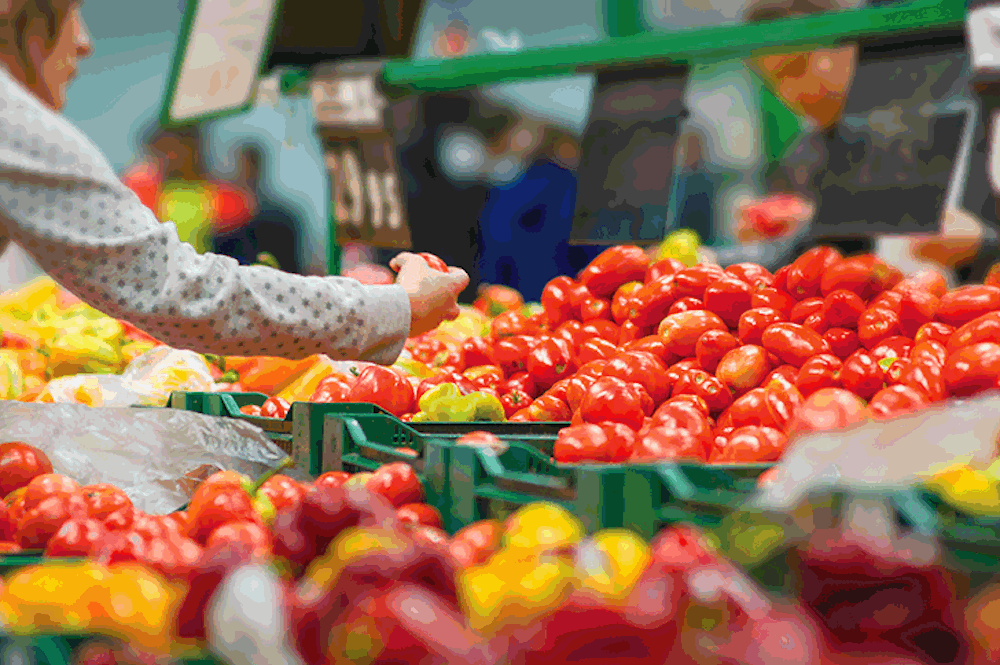Imagine a French grocery store — cheese in all its forms, long breads, wine in abundant glory. As of February 4, an image of charity can be added to this shopping list of cultural signifiers. Spurred by Paris City Councilor Arash Derambarsh, French supermarkets now must donate food that would otherwise be thrown away. Any supermarket that is 4,305-square-feet or larger must now sign with charities to give away food approaching its best-before-date.
With such a push forward in sustainability and giving, the new law offers an opportunity to reflect on our own donation policy in Texas.
Immediately, this square-footage number betrays a major difference between French and American food systems. Where 4,000 feet might represent a well-stocked corner grocery in Paris, American supermarkets casually take up 50,000-square-feet or more.
An alliance between the private sector, nonprofits and government has emerged to decrease food waste in these massive stores. Unlike in France — where some supermarkets reportedly poured bleach on discarded food to prevent food poisoning — the Good Samaritan Food Donation Act (and Texas' Good Faith Donor Act) guarantees that donors are not liable for harm.
In the American fashion, tax incentives sweeten the deal. In 2015, Congress upped the incentive to 15 percent of taxable income for supermarkets donating food.
In South Texas, the San Antonio Food Bank is the major player, connecting supermarkets to people who need meals. Operating in 16 counties in southwest Texas, the food bank feeds about 58,000 people every week.
"From field to fork, any opportunity where there's food that is edible for human consumption that is not going to be sold, we try to exercise strategy to get that food from those that have it to those that need it," SAFB president Eric Cooper said.
From farmer and manufacturer surplus to consumer donations to "creative stuff around wild game," the food bank finds the most efficient ways to connect the loose ends of the food supply chain. Working with major retailers like H-E-B, Walmart, Trader Joe's and Target, the SAFB sells the benefits of donation and good PR to stores who would otherwise toss food left on the shelves.
"For most retailers, we try to offer a value equation," said Cooper. "We try to work with these retailers in a way that says 'Hey, number one: You can decrease your disposal cost. We don't want you throwing away food that would be edible for human consumption. You can decrease that cost while increasing your tax position and your tax write-off ... You can improve your operational efficiencies. Maybe they've got stuff that they're not going to sell that's taking up space in their retail footprint and isn't going to be sold to the customer."
Supermarkets offer a major food source for the SAFB and donation centers across the country — Cooper gave an "off-the-cuff" estimate that 25 percent of national food bank supplies come from retailers.
"We have roughly 40 vehicles, about 25 percent of those vehicles are leaving the food bank in the morning early — about 5:30, 6 — super empty and they're picking up from retailers," said Cooper.
Implemented in America, a donation policy adopted from France would create game-changing opportunities in the donation sphere, as well as problems of infrastructure, nutrition and tone.
It's a different approach," said Cooper. "Personally, me and the food bank, we're probably a little bit more in the spirit of carrot versus stick. We'd rather give encouragement to do the right thing versus forcing it. But, ultimately, the behavior is what's desired."
Securing the infrastructure to store and move this glut of food would be the major challenge for this hypothetical American donation law. Refrigerated trucks, drivers, increased storage and warehouse workers would be needed to connect all this excess food to the hungry.
"You could put an unseen financial burden on the nonprofit community when a law like that goes into place," said Cooper.


